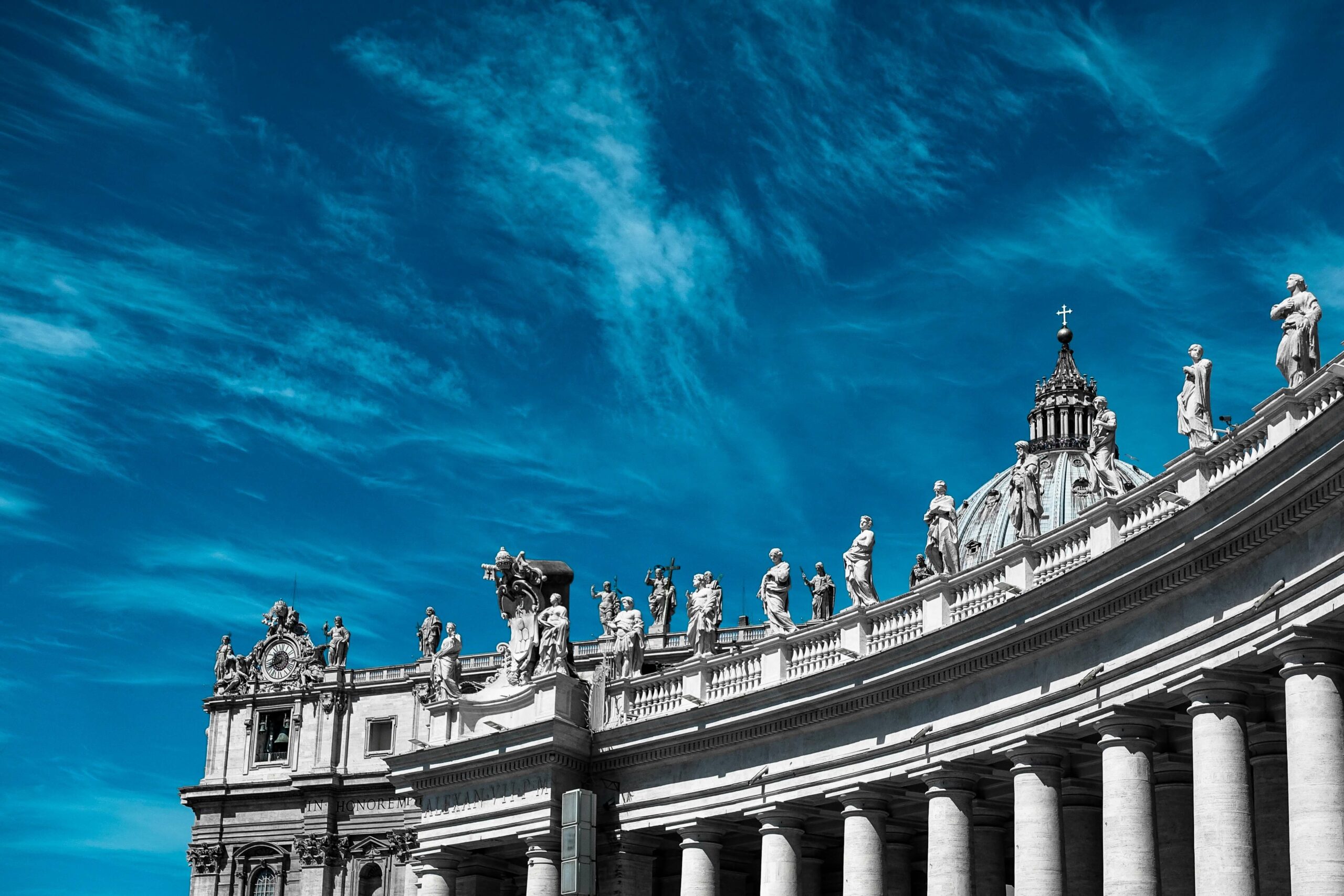Are you attending a Catholic wedding soon? Whether this will be your first traditional catholic wedding, second, or third, don’t worry!
Wedding ceremonies are special events enjoyed to the fullest. You will have the chance to celebrate the relationship of a married couple and understand their religious beliefs, and cultural background.
Catholics who continue to believe and practice religious beliefs will follow a system of marriage steps. Catholic Wedding Traditions are different and similar to other religious wedding traditions. The main difference is that the ceremony takes place in a Catholic church with a mass incorporated. Although some prayer readings take place during the ceremony, fun is prevalent.
Understanding the popular parts of the ceremony is a great way to get a better idea of how Catholic Wedding Traditions & Rituals take place. Read further for the most common Catholic wedding traditions and rituals.
12 Catholic Wedding Traditions and Rituals
1. Wedding at the Catholic Church
The first thing you must know is that Catholic Weddings take place at the Catholic Church. A couple who plans to marry and follows the religion faithfully should plan to marry in a Catholic church. Part of the Catholic faith is to be lawful and marry in the church when the time comes. The priest of either the bride’s or groom’s local church is supposed to conduct the service.
If a Catholic couple was to marry outside of the church (on a farm, beach, private venue, etc…), the marriage would be considered unsuccessful in the eyes of the Catholic religion. Today, it is more common to find opposition to such tradition, but it is still strongly recommended to marry within the church. If a couple decides on this option, usually they are required to write to their bishop for permittance.
2. Wedding Processional
The entrance of both wedding parties can take action in two ways; the wedding party, groomsmen, and bridesmaids can wait at the doors of the church to meet and greet the priests and servers. When ready, everyone will walk to their places together.
The other option includes the priest and servers entering the church beforehand and awaiting the guests at the sanctuary. Once the wedding parties enter and take their places, the priest will begin greeting everyone. After all the guests have entered and made it to their seating places in the church, the priest will conduct singing and an opening prayer.
3. Hymn & Opening Prayer
The priest will then encourage everyone to join him in singing an opening hymn. Once the song ends, he will begin an opening prayer to ask for God’s blessing on the couples’ wedding day.
During the procession, Hymn, and opening prayer, all guests will remain standing until completed. Once finished, the priest shall instruct that everyone may be seated now before leading them into Nuptial Mass.
4. Nuptial Mass Ceremony
Usually, the married couple will have the choice to include a mass ceremony on their wedding day. If they choose to do so, it can take extra time (15 minutes to an hour) to complete all readings, the practice of communion, and preparation of the altar such as in any other Sunday Mass.
During the ceremony, the priest performs his role of the Sunday Mass, encouraging the wedding party to connect with god. He can lead them into forgiving all sins created and accepting God’s graces. Then he will cite several readings from the Old Testament, New Testament, Hymns, and Psalms leading into the Liturgy of the Word.
The nuptial Mass of a wedding ceremony can only occur at a time that doesn’t interfere with the regular times of a scheduled mass, Holy Thursday, Good Friday, and Holy Saturday. The wedding must be scheduled outside of these religious times.
Couples who decide to skip the mass will continue to the celebration of marriage, continuing with the Liturgy of the Word.
5. Offertory
They prepare the altar for the Liturgy of Eucharist (Communion). Depending on the church, the wedding partners, family, friends, and guests might choose to help with the preparation. The priest will soon cite Eucharist Prayers over the bread and wine, offered during communion.
It is common to see the wedding party offering gifts of bread and wine to the priest. Based on the bride’s or groom’s selected home church, a basket might pass around for donations of money. During this moment of the ceremony, it is likely for an offertory song to play.
6. Lord’s Prayer
The priest will then instruct the congregation to participate in the Lord’s prayer. Most Catholics will know the prayer by heart but can read from the books that are placed at their pews. The prayer is taken from Matthew 6:9-13.
The prayer reads: “Our Father, who art in heaven, hallowed be thy name; thy kingdom come; thy will be done on earth as it is in heaven. Give us this day our daily bread, and forgive us our trespasses as we forgive those who trespass against us; and lead us not into temptation, but deliver us from evil.”
At this moment of prayer of the bread and wine, Catholics believe the body of Christ becomes present within the offerings.
7. Holy Communion
The practice of communion is very particular to Catholic followers and is usually only recommended for those practicing the religion. Guests will line up down the aisle before the priest to receive the bread and wine, a moment to share the last supper with Jesus before he died.
It is accepted for non-Catholics to line up and receive a blessing from the priest rather than communion. They may choose to do so or stay in their seat during this part of the ceremony.
8. Liturgy of the Word
Selected members of the wedding party will read a few readings. Who reads what is most often selected by the marrying couple beforehand? The priest will perform his part in readings about marriage and love for the couple. Commonly, reading about the creation of Adam and Eve is read to remind everyone of life’s creation.
After all readings are served, the priest will slowly begin the rite of marriage.
9. Rite of Marriage
This moment of the marriage day is where the vows are revealed, allowing the couple to commit their faith to each other. While the congregation stands, words of “I (name) take you (name) to be my husband/wife, will cherish you forever, in sickness and through health, to honor you all the days of my life” will be exchanged between the bride and groom.
Depending on the wedding couples’ church, the wording might change but typically will follow a similar structure. The wedding partners have the choice of memorizing the vows and citing them, reading them from a book, or allowing the priest to read them as they proceed with “I do”. Every church has different requirements and may be more flexible than others.
Once the vows become exchanged, the priest will take the rings from the maid of honor and best man to begin the exchange.
10. Exchange of Rings
Exchanging the rings is where the marriage ceremony hits its monumental peak. The priest usually holds each ring and blesses them as a symbol of love. When the priest hands the bride and groom their rings, each will slide the ring onto his/her finger (ring finger). As they exchange their rings, they have the option to add one last line connecting their marriage to the name of the Father, Son, and Holy Spirit.
At this moment the priest might instruct the bride and groom to kiss. The couple should kiss during the priest’s sign of peace or the couple may choose to wait until the end of the ceremony.
11. Nuptial Blessing & Conclusion
After the exchange of rings, the priests will ask all guests to stand and participate in one final blessing. He concludes with a final prayer and blesses the entire congregation as well as the newly married couple before him.
He then dismisses everyone with “Go in peace with God”. Sonn follows: “Thanks be to God” by the guests. The ceremony is now over and the congregation watches the bride, groom, and wedding party exit the church.
12. Recessional
First, the bride and groom walk together as they exit the church. The wedding party follows, then the guests, servers, and finally the priest.
Normally, after a wedding ceremony finishes, the congregation is directed to a wedding reception. Depending on the scheduled hours of mass for the church, a time gap might occur between the ceremony and reception.
Friends, family, and close acquaintances are encouraged to enjoy a special feast together. The bride and groom get their chance of cutting the first piece of the wedding cake together, taking the first bite before everyone else.
During this time, the bridesmaid and best man are invited to give toast speeches about the bride and groom to celebrate their relationship together. Soon after, the bride and groom take the floor for the first dance. Once their dance is over, the bride and groom will dance with their spouse’s mother and father. After, dancing with the rest of the wedding party.
After quality time passes at the ceremony and reception, there is one final action. The bride must throw her flowers behind her to the bridesmaids and drive away with her new husband, married happily ever after.




